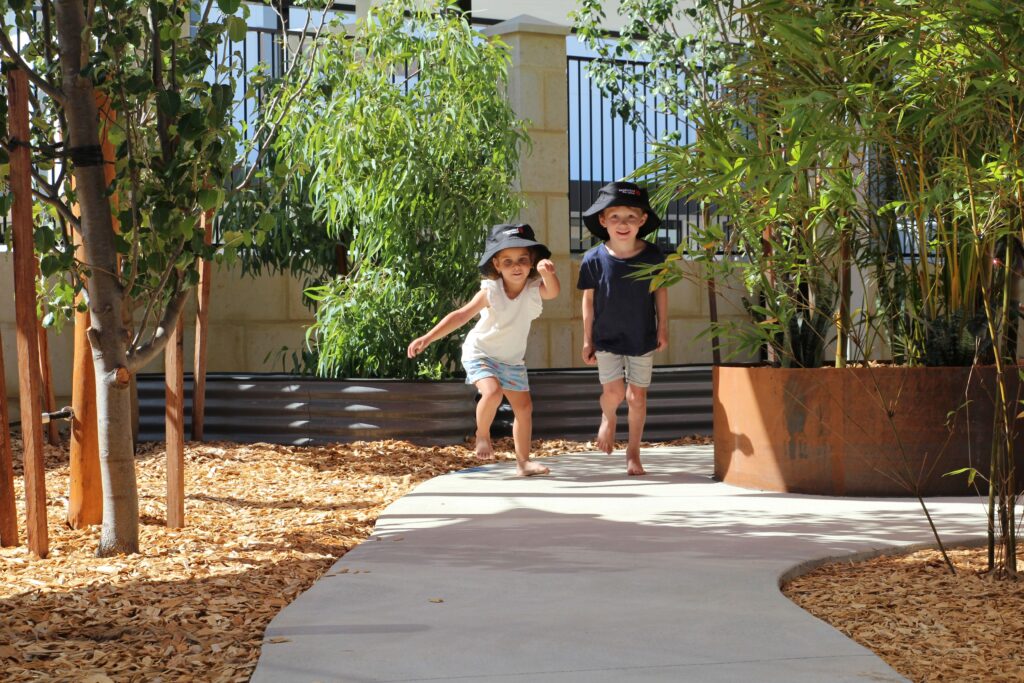Preschool children with more backyard space and those who live closer to parks and water do more active play than children from other neighbourhoods, according to a new study led by Life Course Centre Chief Investigator Professor Hayley Christian from The Kids Research Institute Australia.

The research, published in the journal Environment and Behaviour, shows children living closer to oceans and rivers, and “semi-rural” neighbourhoods, experience 13-26 minutes more physical activity every day than children living in other neighbourhood types.
Professor Christian said physical activity patterns established in early childhood often persisted through life.
“The goal is to find out what factors influence young children’s health and wellbeing so that good policy and urban planning consider children’s needs and support children to thrive,” she said.
“Continuing urban sprawl to support home yard space is not the best solution, so with the increasing densification of our cities, we need access to safe and attractive public open spaces close to homes, consideration of traffic flow and speed, increased tree canopy, and protection of our natural green and blue spaces for generations to come.”
The findings coincide with the 10-year anniversary of the PLAY Spaces and Environments for Children’s Physical Activity Cohort Study (PLAYCE), which has helped to understand how physical activity, sedentary time, and sleep evolve from toddlerhood through to adolescence – and how these shape children’s health, development, and wellbeing.
PLAYCE, supported by the Life Course Centre, is the world’s largest and longest-running study of young children’s movement behaviours using wearable devices.
Since 2015, more than 2,000 Perth children have donned “superhero belts” to create the first international database of preschooler’s accelerometer data, informing:
- The Australian Government 24-hour Movement Guidelines for the Early Years
- Active Healthy Kids Australia Report Cards, revealing that Australian children get a D- in physical activity – a grade which hasn’t improved in 10 years, largely due to a lack of energetic play
- World Health Organization’s Global Standards for Healthy Eating, Physical Activity, Sedentary Behaviour and Sleep in Childcare
More than 75 peer-reviewed publications and technical reports using PLAYCE data have provided new insights into physical activity, sedentary screen time, social-emotional development, tree coverage, and pet ownership.
It has turned evidence into action with the launch of the Play Active Program in 2024. The national initiative designed to boost energetic play in Early Childhood Education Centres, has been adopted by more than 100 childcare services and trained more than 1000 educators nationally, aiming to ensure 80,000+ children engage in energetic play, every day.